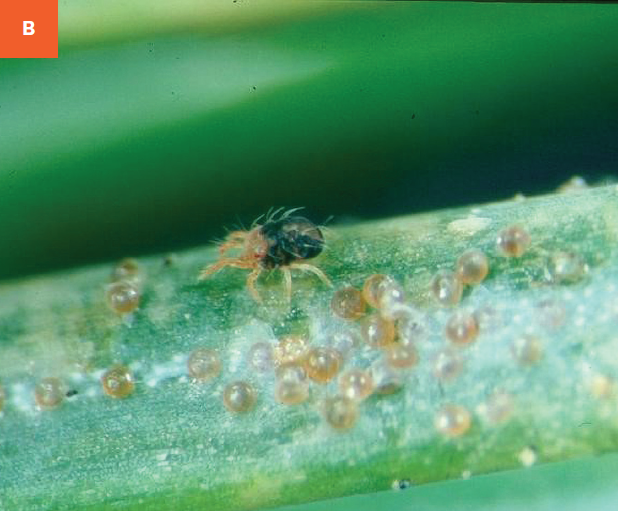Spruce Spider Mite
Oligonychus ununguis
HOST Spruce, fir, pine, juniper, arborvitae, Douglas-fir, yew
DAMAGE/SYMPTOMS The spider mite is a sap-sucking arthropod, and its feeding results in flecking and greyish spots. Mites usually attack the older needles in the lower portions of the tree. With heavier infestations, needles will prematurely drop, and stunting of the needles can occur. Silk can also be evident on the needles.
LIFE CYCLE Eggs hatch in the spring, and they develop into adults in about a month. The spider mites are dormant in the warmer months and are more of a cool-season pest. There are typically two generations per year.
MANAGEMENT Spider mites respond to stressed trees. If practical, increase the humidity on the trees by jetting them with water on a regular basis. Mites have several natural enemies, such as predatory mites, plant bugs, and spiders to help control them. If chemical control is necessary, miticides, horticultural oil, neem oil, and insecticidal soap will minimize damage to the natural enemies of spider mites, which are important for spider mite control. Spider mites are resistant to many insecticides, and broad-spectrum insecticides should be avoided due to the killing of beneficial insects and other arthropods. The best time to treat spruce spider mite infestations is in May and again in September (second generation).
A Mite webbing on needles. B Adult mite.


